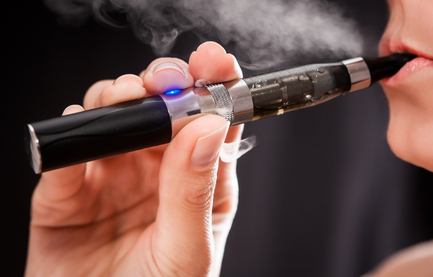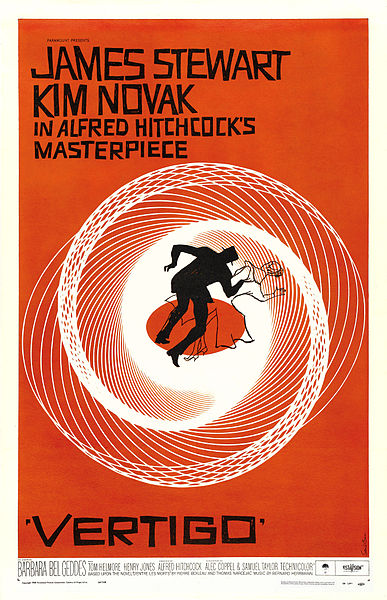An inconvenient truth: no glove, no…
 I’ve got something I want to share with you. Sadly, advanced reproductive age has nothing to do with whether or not a woman should use contraception. In fact, according to a literature review published several decades ago, the likelihood of reproductive sterility at age 40 is 40%, and at age 45, 80%. This means that the monthly risk of pregnancy, although declining with less frequent ovulation, may still be as high as 60%, depending on your age.
I’ve got something I want to share with you. Sadly, advanced reproductive age has nothing to do with whether or not a woman should use contraception. In fact, according to a literature review published several decades ago, the likelihood of reproductive sterility at age 40 is 40%, and at age 45, 80%. This means that the monthly risk of pregnancy, although declining with less frequent ovulation, may still be as high as 60%, depending on your age.
In a review published a few years back in the Advanced Access edition of Human Reproduction Update, investigators report that the decline in fertility among women in their 50s remains insufficient to prevent pregnancy. With the exception of hysterectomy, they point to copper and hormonal IUDs, both of which have failure rates of less than 1%.
Additional considerations when choosing a contraceptive method in midlife include:
- Menopausal stage, i.e. how frequent or infrequent are your menstrual periods?
- Menopausal symptoms
- Sexual issues, e.g., desire, lubrication or lack thereof
Although I am not a fan of hormones, selecting a hormonally-based contraception may help to address these particular issues.
So, how long do you need to wear protection? The investigators suggest that contraception should be continued until women become postmenopausal and attain a natural state of sterility. I’d add that if you are having intercourse with more than one partner, that you add another layer of protection — e.g. a condom — to prevent sexually transmitted diseases.
It may be inconvenient, but surely, not as inconvenient (or traumatic) as midlife pregnancy. Do yourselves a favour: use protection!
Read MoreValentine’s Day for the techie in you!
 Time to lose the chocolate and roses and get your tech data geek on this Valentine’s Day. Indiana University scientists who developed the Kinsey Reporter app (found here on Apple and here on Droid) say that they are turning this Valentine’s Day into a laboratory on sexual behavior during the holiday. Their survey, which is available through the mobile app, will collect data on sexual activity, public displays of affection, flirting, and unwanted experiences. Ultimately, they plan to aggregate global experiences that can be displayed geographically via interactive maps, timelines and charts.
Time to lose the chocolate and roses and get your tech data geek on this Valentine’s Day. Indiana University scientists who developed the Kinsey Reporter app (found here on Apple and here on Droid) say that they are turning this Valentine’s Day into a laboratory on sexual behavior during the holiday. Their survey, which is available through the mobile app, will collect data on sexual activity, public displays of affection, flirting, and unwanted experiences. Ultimately, they plan to aggregate global experiences that can be displayed geographically via interactive maps, timelines and charts.
(If you are unfamiliar with the Kinsey Institute, it is one of the world’s leading research organization on sexual health and knowledge. Moreover, a little known fact amongst even my closest friends is that my Aunt used to run the library; talk about kinky boots! But, I digress.)
In a related press release,Filippo Menczer, director of IU’s Center for Complex Networks and Systems Research (and a School of Informatics and Computing professor who helped design the app) says that they are beginning to see some interesting patterns as to how sexual activity varies by relationship status and are even able to dive deeper to ascertain things like the relationship between flirting location and outcome (sounds like data for the next dating app, right?!).
Go ahead; set your own sexpectations this V Day and crowdsource your loving. Who knows? You might just create the next great sexinfographic without trying!
Cheers to love!
Read More
Guyside: Getting testy about testosterone
 There’s no doubt that men think about the effects of aging on their bodies. And if there were, a viewing of ads for hair colouring, hair thickening agents, or erectile dysfunction drugs would quickly convince you. You could be a new man!
There’s no doubt that men think about the effects of aging on their bodies. And if there were, a viewing of ads for hair colouring, hair thickening agents, or erectile dysfunction drugs would quickly convince you. You could be a new man!
And as regular Flashfree readers will know, one of the things that’s been touted as a solution to the woes of the aging male is testosterone replacement therapy.
The basic idea is that men may have a condition that’s referred to as “Low T.” And so a gel, a patch, a tablet or an injection may bring you back to a more energetic, athletic, virile condition. The pitch has been made more and more convincingly, by all accounts: an Australian research team found that the sales of testsosterone treatments went from $150 million in 2001 to $1.8 billion in 2012.
That’s a 1200% increase. The Australian research indicated that the amount of testosterone being prescribed far outstripped the incidence of “male menopause” or andropause. So what’s going on? Oh, I suspect there’s a generous helping of vanity involved here.
But if it were simply a matter of making men feel better about themselves, it would just be a waste of money. A growing body of research evidence is suggesting that treating Low T may increase the risk of cardiac events. The most recent, an article from the open-access journal PLOS ONE, suggests a substantial increase in the risk of myocardial infarction — what we normally refer to as a heart attack — with the use of testosterone, for men under and over 65 years of age.
I’m sure there are men with diagnostic criteria that would make testosterone therapy an appropriate choice, with a careful calculation of the risks and benefits. But if my hair’s getting a little thin, if I’m not feeling as “macho” as I once was — do I really want to be using a hormone supplement that could put me at risk of a heart attack?
It’s very easy to succumb to marketing-based pitches that appeal to what we think we need as men. But it’s important for us to not jump at those pitches without thinking about the risks and the benefits carefully.
There was a rush to use estrogen and progesterone to help women with symptoms of menopause several years ago, and then a panic when those therapies were associated with increased cardiac symptoms.
I’m no doctor, and I’m certainly not saying that nobody should be using hormones in this way. But I do think that we should think through ALL of our medical decisions and ensure we’re taking the risks seriously.
(photo: CC-licenced image by Flickr user Ed Schipul)
Read MoreSmoking and early menopause
I’m not going to mince words; if you are white and a current smoker, it’s time to stop. Not only are you risking a host of illnesses like lung cancer and heart disease, but you may also be plunging yourself into early menopause.
This is not the first time that I’ve written on this topic and it’s likely it won’t be the last. A few years ago, I shared that in a thorough review of 109 published studies, researchers have found the following:
- Current smokers appear to enter menopause anywhere from 2.5 months to 2.5 years earlier than non-smokers and have 1.3 to 1.7 times greater odds for early menopause
- Former smokers appear to start menopause as much as 2 years earlier than non-smokers, with the risk ranging from 30% to as high as 80%
- Although there is not a lot of information on the severity of smoking habit and menopause (i.e. number of cigarettes smoked daily), there is some indication that women who smoked more than 20 cigarettes daily were likely to start menopause as much as 2 years earlier than women who smoked 11 to 20 cigarettes daily
- The relationship between number of years having smoked and early menopause is unclear
Recent study findings from University of Pennsylvania researchers add to the current knowledgebase on smoking and early menopause, revealing that genetics may play a role. And, while data have already shown that smoking increases the risk of early menopause among women of all races, it now looks as though white women who smoke and have certain genetic variants are especially at risk. In fact, when researchers conducted lab studies on blood drawn from over 400 women enrolled in the ongoing Penn Ovarian Aging Study, they found that white women who reported that they were heavy smokers (at least a pack a day) and whose DNA showed a variation of specific genes (CYP3A4*1B ) entered menopause in almost half the time period as their light smoking (less than one pack daily) and non-smoking peers.
In stark numbers, these women entered menopause an average of 5 years after the entering the study, compared to 11 and almost 14 years, respectively for light and non-smokers. Even more striking was the fact that the women in the study were between the ages of 35 and 47. Women who carried another gene variant — CYP1B1*3 — also had earlier menopause but the contrast to their peers was not as striking.
Smoking exposes women to a variety of toxic chemicals and the implicated genetic variant itself results greater estrogen degradation and possibly even activates chemicals known as PAHs– polyaromatic hydrocarbons — carcinogens in cigarettes that have been shown to be toxic to immature egg cells.
Experts estimate that more than 20 million women in the United States are current smokers. And this figure only applies to combustibles. Personally, I have concerns about the upsurge in e-cigarettes, especially among women and particularly among 18 to 24 year olds who have reported trying them. The Centers for Disease Control reported that in 2012, 7% of students in grades 6 to 12 had tried e-cigarettes. And while current data suggest that nicotine delivered by vapor should theoretically carry less risk than cigarettes, less is known about the chemicals used to vaporize that nicotine and the long-term ills that they may cause.
The bottom line is that if you still smoke and you are in your 30s or early 40s, you are setting yourself up for an early entry into menopause. While a few hot flashes or mood swings may not frighten you, other associated issues like bone loss, increased risk for heart disease and disease and stroke might. More importantly, if you are white and smoking, you may consider signing up to have a DNA evaluation.
I know firsthand how difficult it is to stop smoking. But the risks truly outweigh the benefits of the instant gratification that a long pull on a cigarette can deliver.
Read More
I’m so dizzy…
my head is spinning.
Those of you in my generation will remember this song by Vic Reeves with the Wonder Stuff. Talk about a one hit wonder! Or Vertigo, the incredible film by Alfred Hitchcock. But, dizziness is anything but wondrous and having suffered a form of vertigo that occurs when the head changes position (also known as benign paroxysmal positional vertigo or BPPV)), I can share that it’s an awful experience. The last time it happened, I didn’t leave the house, didn’t drive and required motion sickness pills to sleep.
The reason why I’m sharing this with you is that BPPV occurs in at least twice as many women as men and its likelihood increases with aging. More troubling is the fact that study findings suggest that hormonal fluctuations — especially during menopause — appear to play a role. Historically, BPPV has been linked to the dislodging of crystals in the inner ear, which causes a greater sensitivity to gravity. Thereafter, changes in head position, for example, lying down, looking up or turning over in bed can cause brief vertigo spells. Although most of the time researchers don’t know why it occurs in some people versus others, BPPV has been linked to head trauma other ear conditions.
The most current research comes from a study of over 1,300 individuals, almost 1,000 of whom were women. I’ve already noted that in the general population, BPPV occurs in twice as many women as men. In this population, not only were women in the 40s three times as likely as their male peers to develop BPPV, but most of them reported being in perimenopause, suggesting that hormonal fluctuations , especially estrogen, were at play. What’s more, some data suggest that there is as we age, there is a deterioration in the protein that help anchor the inner ear crystals, and estrogen appears to help promote this.
The silver lining is that while there is little that can be done about aging and estrogen’s role in BPPV, the problem can be successfully addressed with a series of head maneuvers that help restore the crystals back to their former position. Still, I personally find that I get periodic vertigo sensations at the oddest times and that they tend to worsen during my worst hormone movements.
Dizzy Lizzie? Sure, I’ll admit to it. What about you?
Read More








